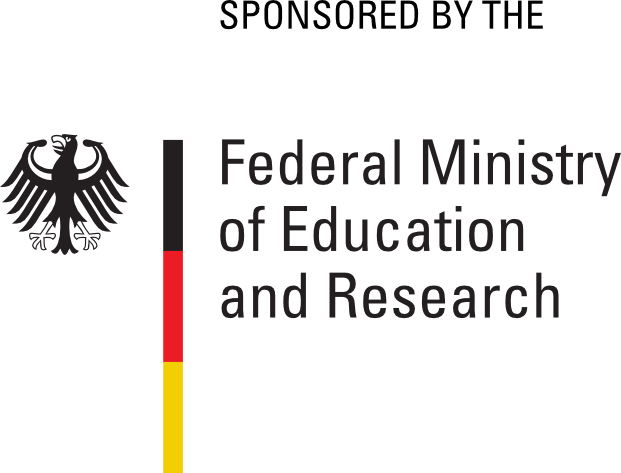Großflächige OLED Beleuchtungsanwendungen auf dünnen flexiblen Substraten (Kürzel „LAOLA“)
Profile
| BMBF funding measure | Internationalisation of Leading-Edge Clusters, Forward-Looking Projects and Comparable Networks, Implementation Phase |
|
| Project name: | Large Area OLED Lighting Applications on ultra-thin flexible Substrates (LAOLA) | |
| Grant receipient and project partners |
Funded partners:
Connected and associated partners:
|
|
| Project coordinator: | Organic Electronics Saxony (OES) Würzburger Straße 51, 01187 Dresden |
|
| Duration: | 01.08.2018 until 31.07.2021 |
Brief overview
Background
The German government’s new High-Tech Strategy aims to combine the strengths of science and industry. In recent years, research institutions, universities, companies and other players have organized themselves into successful regional and national clusters and networks. However, complex research questions and innovation topics are increasingly being tackled with international partners all over the world. In the future, global competitiveness will depend decisively on cross-sector and interdisciplinary cooperation with internationally outstanding innovation regions. This measure is intended to support outstanding clusters and networks in Germany in developing and intensifying strategic cooperation with leading European and international innovation regions with complementary competencies and in transforming it into concrete, viable cooperation projects.
Objectives and Procedure
Within the LAOLA project, the partners develop large-area lighting applications using organic light-emitting diodes (OLEDs) on flexible substrates. The focus is on ultra-thin glass, which offers advantages over plastic as a substrate due to its excellent barrier properties. For roll-to-roll production, the winding processes of the substrate must first be integrated into the coating system. A further challenge is the development of laser cutting and structuring processes for substrate separation and interconnection. In addition, efficient protective layers for OLEDs and transparent electrical contacts are being developed, which represent added value in the lighting market. As a result, demonstrators will be developed to demonstrate the performance of the technology. Some of the technologies will be researched in cooperation with partners from the partner cluster in Yonezawa, Japan. The entire project is coordinated by Organic Electronics Saxony (OES).
News
August 22, 2018 — Kick-off at Fraunhofer FEP
After a long wait for the new German government to form, the project can finally start. The kick-off meeting took place at the project partner Fraunhofer FEP. The project partners agreed once again on the work plan and agreed on the first deliverables and milestones.
16 January 2019 — Second project meeting at Heliatek
The project takes on its first forms. A concept for the conversion of the roll-to-roll system at Fraunhofer FEP and for the conversion of the metal evaporator has been developed and is to be implemented step by step. First laser cutting trials of the thin glass substrates look promising.
29 January 2019 — International project meeting in Tokyo
Joint project meeting with the Japanese partners in the context of the nanotechnology fair „nano tech“ taking place in Tokyo. A total of four of the German partners took part in the meeting. The project was further presented at the „Germany-Japan Joint Workshop on Flexible, Printed Electronics and Sensors“ on 28 January in Tokyo. Ms. Jacqueline Hauptmann from Fraunhofer FEP also reported on the latest developments in roll-to-roll OLED applications.
25 June 2019 — Third project meeting at CreaPhys
The evaporator unit for the realization of transparent metal contacts is installed in the roll-to-roll system at Fraunhofer FEP and will be tested in the next few weeks. The aim is to produce OLEDs with a transparency of > 50 %. Progress has also been made in the other aspects of the project: The conversion of the winding unit in the roll-to-roll system for unbroken winding of ultra-thin glass is imminent. Initial tests for a mechanical protective coating by high-rate evaporation are promising. A central role lies in the development of a cutting and separating process for the thin glass OLED modules, since a free-form cut is necessary for the production of attractive and transparent modules. Finally, concepts for demonstrators were presented and discussed. The first development steps are to be presented at the 2020 trade fairs.
23 – 27 September 2019 — International Project Week in Dresden
Following the successful tradition of the previous year, we held another International Project Week in Dresden, offering the project partners opportunies to discuss about the project status as well as next steps. As a cultural side event, we visited the Transparent Factory in Dresden and had a look at the fabrication of the Volkswagen e-Golf. Furthermore, we introduced further members of the OES cluster by visiting Fraunhofer ENAS, TU Chemnitz and 3D-Micromac in Chemnitz. You will find information here.